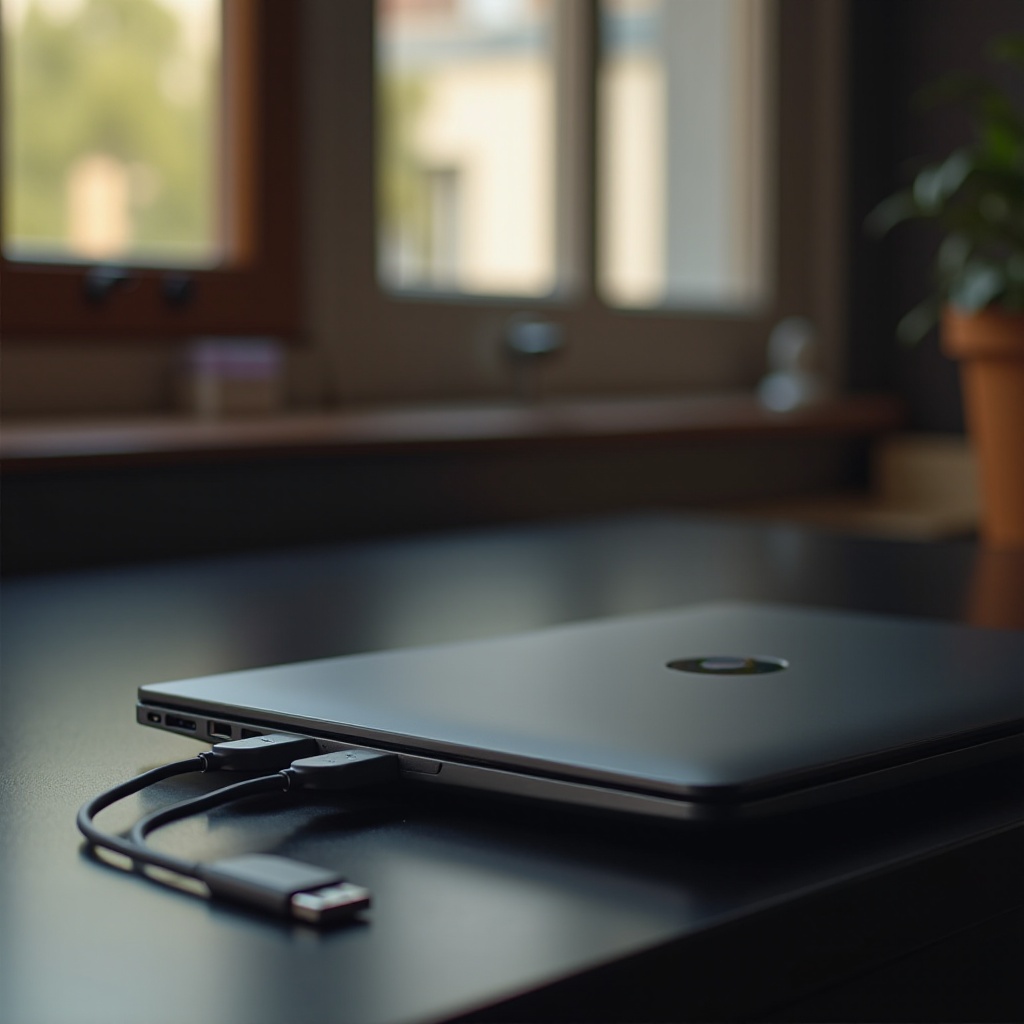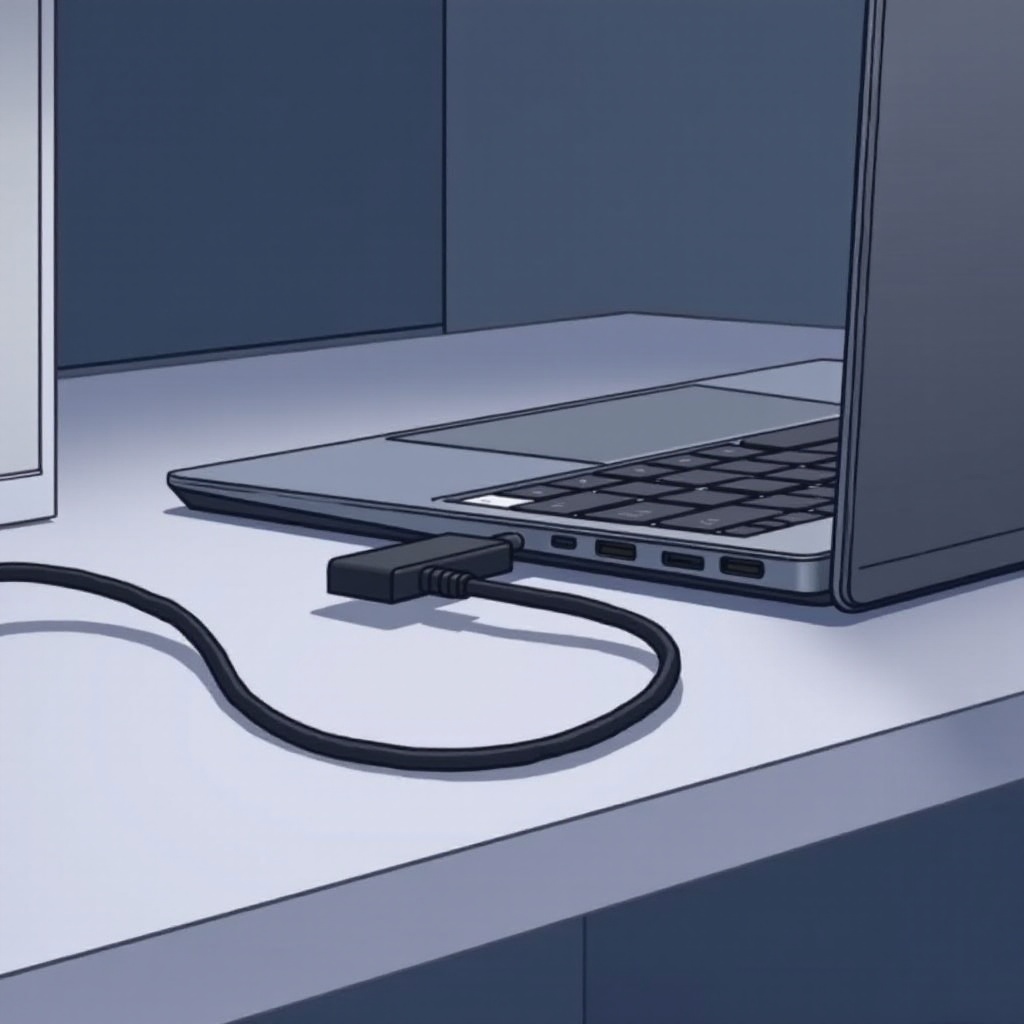Introduction
Curiosity often leads users to experiment with their devices. Plugging a Chromebook into itself is one such curiosity. This article aims to demystify what happens during this peculiar setup while addressing both the technical aspects and the potential risks involved. By exploring this topic, Chromebook users can gain a clearer understanding of the hardware, the initial hypotheses, and the reality of the scenario.

Understanding Chromebook Hardware: Ports and Connections
Chromebooks are equipped with various ports designed for specific functions. Common ports include USB Type-A, USB Type-C, HDMI, and sometimes even SD card slots. Each port has its designated role, whether for charging, data transfer, or connecting external displays.
- USB Type-A and USB Type-C: These ports handle data transfer, power delivery, and peripheral connections.
- HDMI Port: This port is mainly used for external display connections.
- SD Card Slots: Primarily for expandable storage options.
Knowing the functions of these ports helps explain the ramifications of plugging them into each other. When these ports are utilized in unintended ways, the results can be both intriguing and informative. This understanding sets the stage for the user curiosities we will discuss in the next section.
User Curiosities and Initial Hypotheses
It’s natural for people to wonder about the unconventional use of ports. Some might hypothesize that doing so could create a loop, potentially benefiting through faster data transfer or self-charging capabilities. Others might have less optimistic theories, such as the potential damage to the hardware or software malfunctions.
- Faster Data Transfer Hypothesis: Users might speculate that plugging a USB port into another could somehow create a direct data path within the device.
- Self-Charging Theory: Another hypothesis might be that the Chromebook could create a feedback loop that somehow charges the device.
- Hardware or Software Malfunction: Some users fear that such an action could lead to short circuits or software crashes.
By addressing these hypotheses, we can clarify the misconceptions and set the groundwork for a technical breakdown of what actually happens.

Technical Breakdown: What Actually Happens
When you plug a Chromebook into itself, especially via the USB Type-C ports, several things occur at the hardware and software levels.
Hardware Level
At the hardware level, modern USB Type-C ports are intelligent. They have built-in mechanisms to detect what type of device they are connecting to, whether it’s a peripheral or another power source.
- Error Detection: The Chromebook’s hardware is designed to recognize invalid connections. When a looping connection is detected, the ports simply de-activate.
- Safety Protocols: Most modern electronic devices, including Chromebooks, come with safety protocols to prevent damage from unusual connections.

Understanding the Reactions and Safety Measures
Hardware reactions are only part of the story. Next, it is crucial to understand how the software aspect complements these reactions to ensure device safety.
Software Level
Software also plays a role in managing these connections.
- Operating System Responses: Chrome OS is designed to manage connections efficiently. When a self-loop is detected, the OS will typically ignore the connection to prevent any adverse effects.
- Notification Systems: Some Chromebooks might display an error message or notification indicating that the connection is invalid.
Thus, both hardware and software collaborate to ensure that plugging a Chromebook into itself does not cause immediate harm or initiate any unique functionality. This leads us to analyze the concept of power and data loops in detail.
Power and Data Loop Analysis
When understanding power and data loops in this context, it’s crucial to distinguish between the two types of loops:
Power Loop
A power loop occurs when there is an attempt to direct power back into the device without a designated output.
- Feedback Prevention: Chromebooks are designed to prevent such feedback loops. Internal circuits are in place to avoid the re-routing of power in a damaging way.
- Port Deactivation: As mentioned earlier, USB ports will deactivate if an invalid connection is detected, preventing any potential electrical damage.
Data Loop
A data loop involves creating a closed circuit for data transfer, which can cause system confusion or malfunction.
- System Ignorance: The operating system effectively ignores the data loop, preventing any form of data corruption or unintentional transfer.
- Error Handling: Chrome OS handles these errors gracefully, ensuring that no significant system resources are wasted on managing invalid connections.
Through these measures, Chromebooks prevent power surges and data conflicts, illustrating the robust design of modern devices.
Potential Risks and Safety Measures
Although the Chromebook is designed to handle such unintended connections, users should still be aware of the potential risks and follow safety measures.
Potential Risks
- Port Wear and Tear: Constantly plugging and unplugging devices can wear out the ports.
- Overheating: Although unlikely, unconventional connections could theoretically cause minor overheating.
- Software Glitches: Frequent invalid connections might result in minor software annoyances like error notifications.
Safety Measures
- Follow Manufacturer Guidelines: Always adhere to the recommended uses of your Chromebook’s ports to avoid unforeseen issues.
- Limit Unnecessary Experiments: Experimenting with your device’s hardware is not generally recommended unless you are sure of the outcome.
- Consult Official Support: If in doubt, reach out to Chrome OS support for guidance.
Understanding these risks and measures can help users make more informed decisions about their device use.
Conclusion
Plugging a Chromebook into itself is an intriguing concept fueled by curiosity. While the hardware and software are designed to prevent damage, it is essential to understand the potential implications and exercise caution. By being informed, users can safely make use of their device’s capabilities without unnecessary risk.
Frequently Asked Questions
Can plugging a Chromebook into itself cause damage?
Plugging a Chromebook into itself is unlikely to cause significant damage due to built-in safety protocols.
Will this action void any warranties?
Performing unconventional actions like this may risk voiding your warranty. Always check the manufacturer’s guidelines.
How can I safely experiment with Chromebook ports?
Ensure you understand each port’s function, avoid unnecessary experimentation, and consult official support when in doubt.